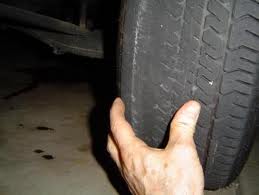Tire rotation is an important maintenance duty that extends the life of your tires and ensures safe driving.
Front And Rear Tires Wear Differently
Think about it. All that parallel parking. All those three-point turns. With each turn of the steering wheel, pressure is brought to bear on the front tires. (This is even more accentuated in front-wheel-drive cars, where the front wheels also supply the main motive power for the vehicle.) Resistance causes friction, which in turn produces heat. The result? The front tires wear quicker than the rears. Because of this, it’s necessary to rotate the tires front-to-rear several times during their life cycle to 1) equalize tread wear and 2) maximize the life of the tires. This is what we refer to when we say “rotate the tires.” Rotating generally does not refer to either of the following actions:
- Exchanging tires on the same axle — for example, swapping the rear tires left to right
- Criss-crossing tires — moving a tire from the passenger’s side rear to the driver’s side front
There’s a good reason for this. Tires develop wear patterns as they age. Some of these patterns are tied to the suspension system and the alignment. That’s why we keep the tires on the same side of the car.
How often should you rotate your tires? That depends. Refer to your owner’s manual for exact guidelines, but most manufacturers recommend rotating tires roughly every 5,000 to 10,000 miles. Again, see your owner’s manual for specifics. At Padonia Auto Service, we normally recommend rotating every 7500 miles and, if you are using synthetic motor oil, it’s easy to remember because each time you are in for an oil change, just simply rotate your tires as well.

Lack of tire rotation



 We employ ASE Certified technicians, the industry standard for automotive repair certifications. Only the most committed technicians will test and become certified.
We employ ASE Certified technicians, the industry standard for automotive repair certifications. Only the most committed technicians will test and become certified.

